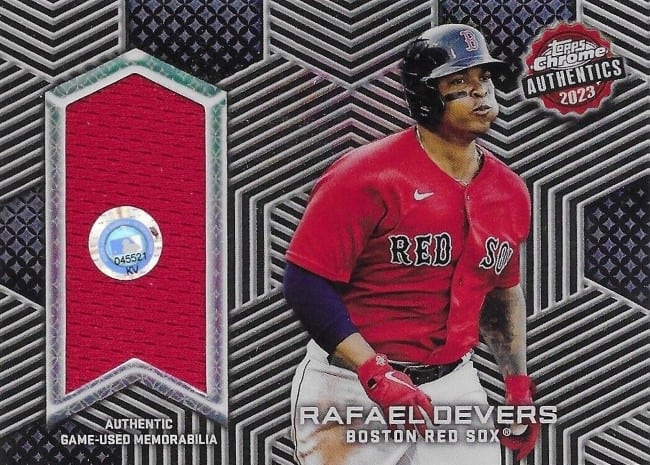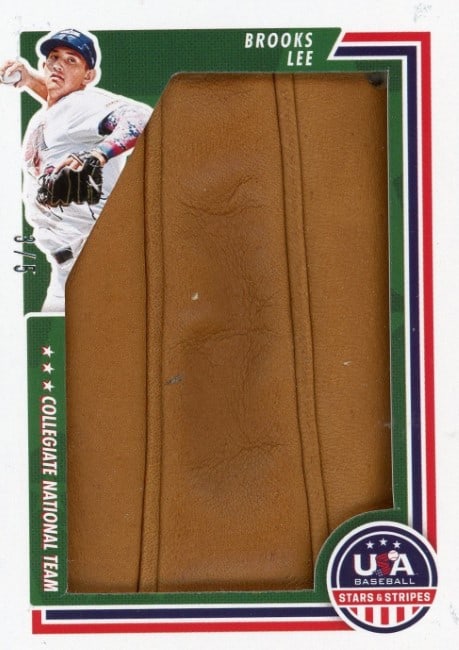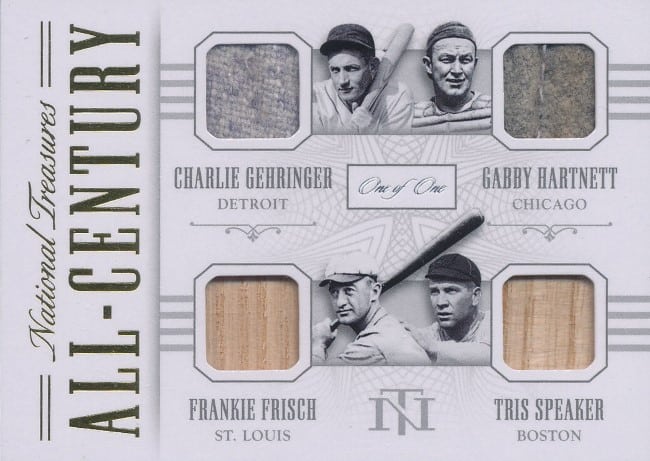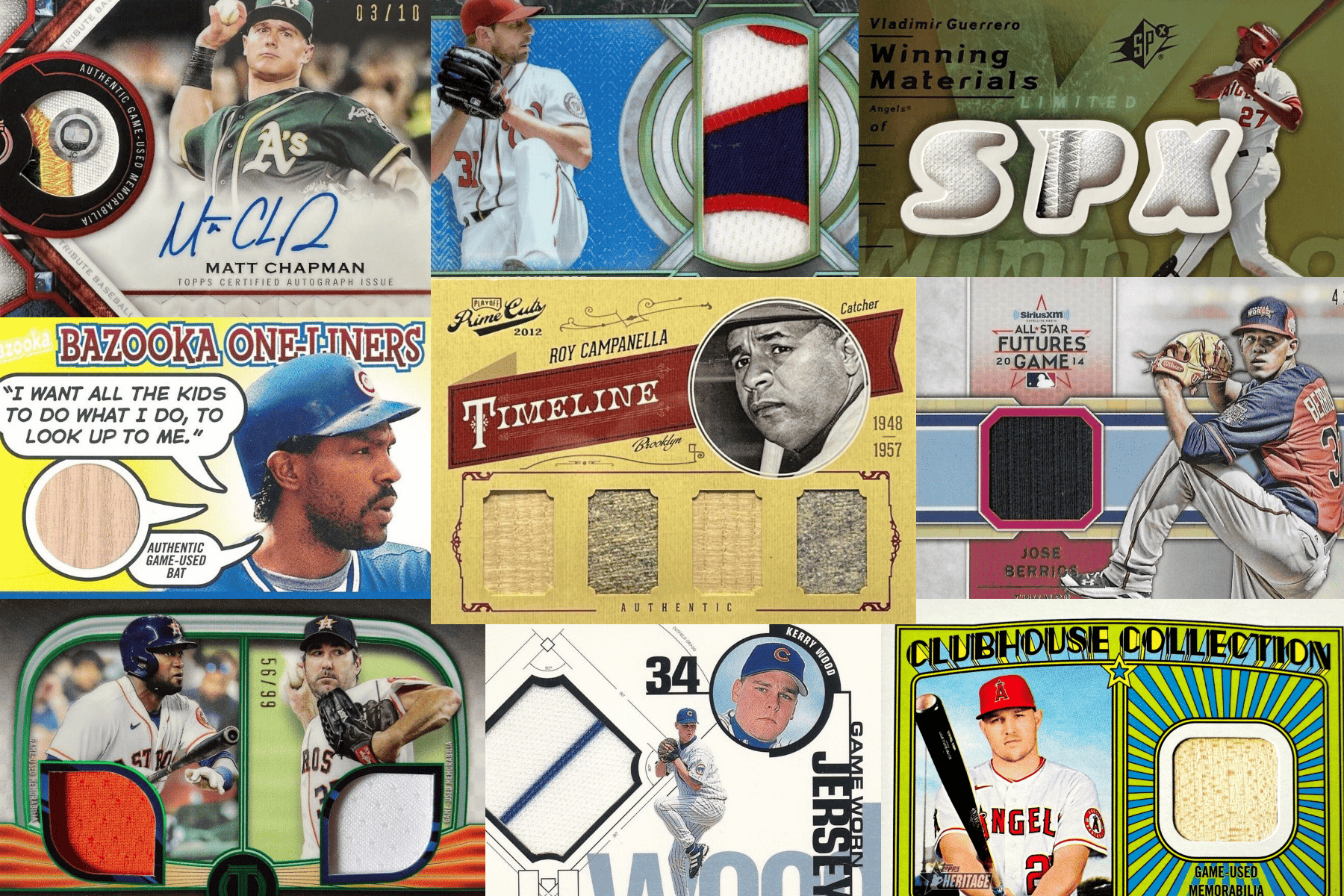
Baseball has always been more than just a game; it’s a piece of American culture, rich in history, and filled with iconic moments and legendary players. Baseball card collectors understand this, and they seek to preserve these memories in unique ways. One such way is through relic cards, which capture the essence of the sport by incorporating actual game-used equipment and uniforms into the cards.
In this article, we’ll explore the world of baseball relic cards, including where the relic material comes from, how these cards are manufactured, what types of cards collectors prefer, and a look at some of the most notable relic cards in the hobby.
Where Do Relic Materials Come From?
Relic materials in baseball cards originate from a variety of sources, each adding an authentic touch to the card’s historical significance.
A significant portion of relic materials comes from items used by players during actual games. Jerseys, pants, hats, gloves, bats, and even pieces of the San Diego Chicken all make their way into the relic card industry. These items are collected by teams and organizations and can be purchased by companies like Panini and Topps for card production.

In most cases, the item is not attributed to a specific event or game, although there are exceptions:
- Special event relics, like those containing jerseys from the World Baseball Classic and the Futures Game, are attributable to those games
- Topps Authentics cards incorporate an MLB-specific hologram. This contains a code that can be entered into an online portal to find the game where the relic was featured.
The most popular pieces of equipment are jerseys and bats. For jerseys, they’re cut into smaller swatches that are embedded between two pieces of cardstock. Pieces containing multiple colors and patches are more highly coveted. Pieces of game-used bats are also popular relic materials. Bats that players broke during games are collected, and sections are used to create cards.
How Are Baseball Relic Cards Manufactured?
The production process of baseball relic cards is a meticulous and precise endeavor to ensure the cards’ authenticity and quality:
Authentication and Certification
The first step is to verify the authenticity of the relic materials. For vintage materials, the card company must procure material for a particular player – a Mickey Mantle bat, for example. Authentication agencies or experts examine the materials, verifying their origin, game-use, and player association. Each item is assigned a unique identifier and accompanied by a certificate of authenticity.
For modern players, the material is typically given to a card company employee, to vouch for its authenticity, or a member of the MLB Authentication team in some cases. These are through player- or MLB-negotiated arrangements to provide materials to the company.
Card Design and Layout

The cut of the relic material is pre-planned and the card company’s design team will know the exact size and preservation method they’ll use. This determines how many swatches they’ll need; for example, some card companies promote cards that have a card-sized piece of jersey (roughly 2.5 x 3×5) while others have only a sliver.
Card design is a serious process. The design highlights the relic, often featuring a photo of the player along with information about the item’s origin. The design’s aesthetics and style may vary depending on the card set and manufacturer. The design may also change based on the team’s color scheme or the type of material being shown.
Production and Distribution
Relic cards are produced in limited quantities and are often part of special sets or inserts in trading card products. They are then distributed to the market through packs, boxes, or individual sales. The card company includes a general statement about the source of the material on the back of every card, and it can provide clues to the material’s provenance.
What Types of Cards Are Preferred by Collectors?
Collectors of baseball cards have diverse preferences, and the type of relic card they seek can vary based on their interests and goals. Here are some types of relic cards that tend to be preferred by collectors:

- Player-Worn Jersey Relics:
- Cards featuring swatches from a player’s worn jersey are highly sought after. These cards offer a tangible connection to the player and the game.
- Bat Relics:
- Bat relics hold a special place in collectors’ hearts. They capture the essence of a player’s power and skill, making them highly desirable. These are highly favored when the player is a legendary slugger.
- Dual, Triple and Quad Relics:
- Some cards feature relics from multiple players or multiple types of relic materials. Themed items – like a card featuring two or more players, or a card with more than one type of material on it – are common. For multi-player cards, the value of the card depends on the quality and relevance of each player on the card.
- Cut Signature Relics:
- Some relic cards feature a piece of a player’s autograph alongside the relic material. These are sometimes the only affordable way for collectors to acquire the autographs of historical players like Jackie Robinson and Walter Johnson, whose autographs on other items are prohibitively expensive.
Conclusion
Baseball relic cards are more than collectibles; they are pieces of history encapsulated in cardboard. These cards bridge the gap between fans and the sport they love by offering tangible connections to legendary players and iconic moments. Whether it’s a jersey swatch, a piece of a broken bat, or a relic from a historic game, these cards preserve the spirit of baseball and keep its history alive in the hands of collectors.
